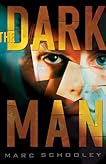The clipper ship Challenge -- a marked ship
Ship discipline has always been a problem for sailors and their officers. In history you can find splendid examples of officers who were firm and enforced their articles of discipline without brutality. They led their men through personal example, positive discipline, and a genuine concern for sailor welfare.
Admiral Lord Horatio Nelson is a splendid example as is his American contemporary Captain Stephen Decatur. Incidentally, I will soon write two more installments about Decatur's brushes with pirates and his later years.
In fiction, Patrick O'Brian's Captain Jack Aubrey and C. S. Forester's Horatio Hornblower are officers who detest the lash and uses it sparingly.
As a young U. S. Army officer, I often heard the maxim, "Lead by example." Over the years, I've discovered that the path to greatness or infamy stems from how one leads by example.
In the 18th and 19th centuries, condition at sea were brutal. Men aboard both warships and merchantmen fought the elements and endured tainted foodstuffs, with death a daily possibility. At times seamen at the end of their physical and mental limits were hard pressed to endure much more.
Good leaders coaxed and encouraged their men without coddling. Bad leaders found that for the short term the liberal application of bullying and brutality achieved results.
Since captains were absolute monarchs when their ships were at sea, it was very easy to slip into the dark ways of leading a crew. These ships were often called ships of blood.
Even if men were killed and maimed during discipline, it was very difficult to determine who did what to whom once the ship reached port. Often sailors simply jumped ship and no one in authority was the wiser.
Captains rarely disciplined men directly, relying on the junior officers to keep order. On ships where blood ran freely, the first and second mates were called "bucko mates." They carried belaying pins or tarred rope and used them with enthusiasm. These officers defended their actions, stating that Johnny Tars were anything but gentlemen and life aboard ship called for bigger and meaner men to keep them in line.
In U. S. Maritime history, the voyage of the Challenge in 1851 is a notorious example of the violence wielded by "bucko mates." Captain Robert "Bully" Waterman was in a bad way. He had the clipper ship Challenge to take around the Horn to San Francisco with $60,000 of freight, a few experienced men and the rest of the crew the scrapings of the docks. He could earn a $10,000 bonus if he made it to San Francisco in 90 days.
When James "Black" Douglass offered to come aboard as first mate, Waterman gladly accepted him. Former sailors under Douglass were waiting for him to step ashore. The Challenge was his ticket out of New York in a hurry. Waterman no doubt believed he could win his bonus if Douglas could get his crew in shape. Douglass' reputation for sadistic brutality was well-known.
Before the voyage ended one man would be knifed to death, and the rest save one man were beaten. On October 29, 1851, the Challenge arrived in San Francisco after 102 days at sea. Sailors on the docks, who saw men being carried off the Challenge on stretchers, became so angry that they chased both Waterman and Douglass for the better part of a day. The mob was determined to lynch both men from the yardarms of the Challenge. Both men turned themselves into the authorities for protection and they were eventually brought to trial.
Prosecuted in the the Federal Court of Judge Odgen Hoffman under a U. S. law written in 1835, the law called for punishment of ship's officers when it could be clearly established that sailors were mistreated. The law was so vague that successful prosecutions were rare.
With the California Gold Rush in full height, entire ship crews deserted and took off for the gold fields once they anchored in San Francisco Bay. Only a few witnesses could be rounded up and they provided contradictory testimony. Perhaps most damaging was the testimony of crewman Charles Pearson, a Navy veteran who served under Steven Decatur. He said he had been beaten, but admitted that the crew was a miserable lot.
In the end, the crewmen were exonerated. Waterman was fined $400.00. Douglass was fined $250, and the second mate Andrew Coghill was sentenced to 30 days in jail. There is a small measure of justice in that Waterman's obsession with crew discipline no doubt contributed to his slow voyage and loss of the $10,000 bonus.
The Challenge became a marked ship. The owners had such a difficult time finding crew for her that the new captain had to offer $200 head money. As for the two men who gave her the tainted reputation, they never served on another ship, as far as anyone knows.
Waterman never left California. Instead, he started raising poultry and cattle. Later he became San Francisco's port warden and inspector of hulls. As for the bunko mate Black Douglass, beyond never signing on another ship, it's as if he stepped off history's page.
In Black Flag, Black Ship, we meet Liam Gallagher, a vicious bunko mate aboard the slave ship Vanity. Will Gallagher get a free hand to fulfill his sadistic urgings? Read the book to find out what happens to him.















